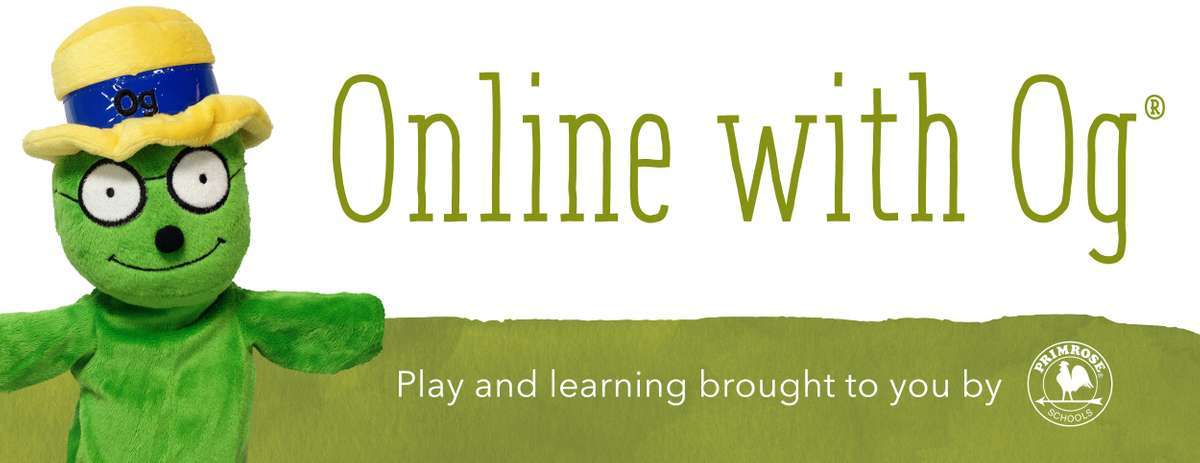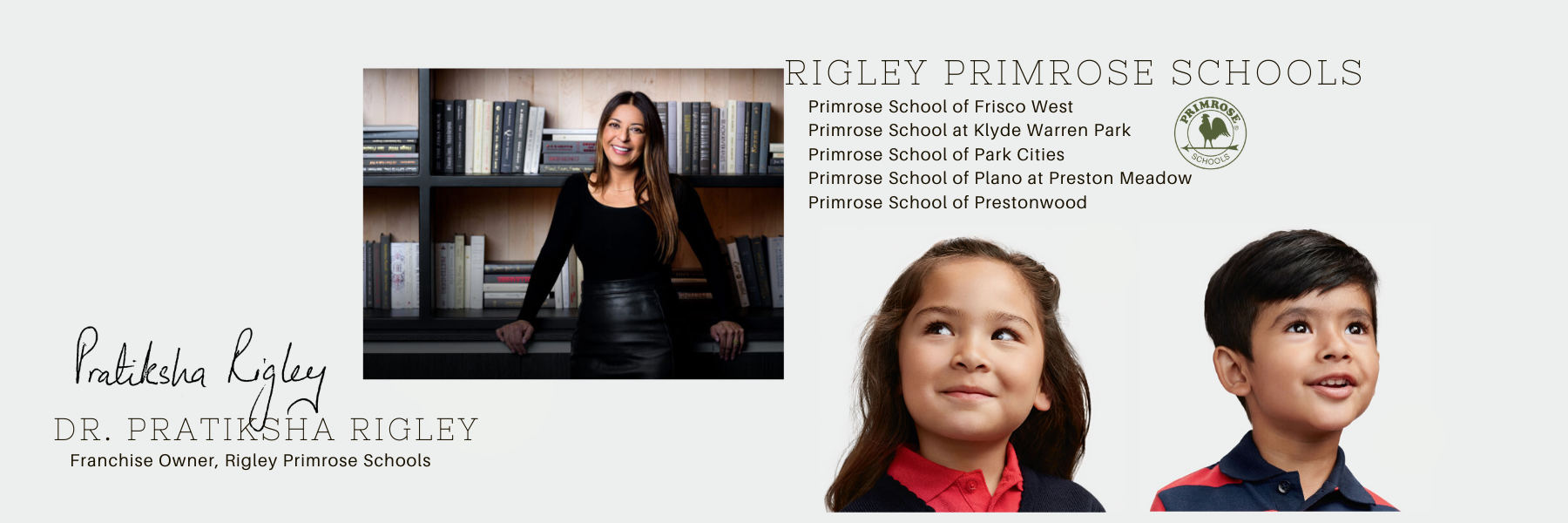
ICYMI: New Online Curriculum Weekly from Primrose Schools - Weeks 2 and 3
As we inch closer to another weekend, I wanted to be sure to recap our newest high-quality, home-based curriculum that encourages learning and play, Online with Og®! In case you missed it, Primrose Schools will be rolling out new online curriculum you can do at home, with your child! Activities have been specially chosen that are developmentally appropriate for your little one’s age group and are shared with our community by our Primrose Schools curriculum team, fresh weekly.
Og® is a bookworm and one of the Primrose Friends Puppets your children enjoy in the classroom. Og® the Bookworm represents caring and literacy and is the perfect Primrose Friend to bring your child's school experience to your home. Over the next few weeks, we will provide specially designed interactive activities for children and parents as we navigate at-home learning together – complete with downloadable daily schedules and activities, art projects with instructional videos, STEAM activities and more. There’s even a ‘Snacks’ section! Each week, new complimentary content will be made available to help you entertain and educate as you engage with your children in fun play and learning activities. We know your children will also be delighted to reconnect with their beloved Primrose Friends puppets.

Last week, in Week 2 of our new online curriculum, the theme was Caring for Myself and the World. Students learned how to care for themselves and began exploring how to reach out and care about the world as they explored the concepts of conserving and reusing nature’s resources. Students said the Pledge of Allegiance with our Primrose Friend Percy, and we also introduced the #PaperPercyChallenge this week. Students can print a paper Percy to color and cut out, and each week we will have a new challenge for your child’s Percy to go on! Photos of these adventures can be shared on Instagram by tagging @PrimroseSchools and @RigleyPrimroseDreamTeam.
One of my favorite activities from last week’s Online with Og® curriculum selection is called, ‘Sight, Smell, Feel,’ and it is for all ages. Children are invited (by parents or teachers) to notice the items in a specific room in their home, and find the soft items, or the items that smell nice. They can write down their words on their own, or with a little help, and draw pictures next to the words of what it is that feels soft or smells nice. For younger children, you can even have them just try telling a story about what they see in each room, instead. Want to try it at home? Visit the Online with Og® page and scroll down to the red Language & Literacy section.

This week, in Week 3 of our new online curriculum, we are still exploring Our World, and learning about conservation. During Circle Time, Benjamin the Bear encourages children to practice acts of generosity, such as spending extra time playing with a sibling, helping with the laundry or another chore without being asked, or creating cards for a loved one. Students can say the Pledge of Allegiance each morning with our Primrose Friend Percy, and we had a new #PaperPercyChallenge this week – building a castle from recyclable materials found around your home! There is even a special Story Time with Jo Kirchner, Primrose Schools CEO and Chair of Primrose Schools Children’s Foundation.

While impossible to replicate the full Primrose early learning experience brought to life by your child’s nurturing and dedicated teachers, we want to help you by working rapidly to expand and enhance our at-home offerings, as I know many of you have a new dual, concurrent responsibility – to your children and your employer. I can only imagine the challenges you must be facing, working from home while having your children with you.
In addition to these resources offered by Primrose Schools, the Rigley Primrose Schools in Dallas, Addison, Plano and Frisco are also sharing some of their favorite children’s stories read by teachers and leadership team members on their Facebook pages (links below). Be sure to ‘like’ each page to see as new videos are posted! You can also subscribe to the Primrose Schools YouTube page for fun (and educational!) activities you can do at home.
Primrose School of Frisco West
Primrose School at Klyde Warren Park
Primrose School of Park Cities
Primrose School of Plano at Preston Meadow
Primrose School of Prestonwood
Our hope is that this new online experience enables you to connect with your child during this time at home. Please know our entire Primrose community is thinking of you and wishing your families continued safety and health.
